Bespoke Extended-Width Digital Quilting Design

Bespoke is an extended-width design with hand-drawn, unique feathers meant to look like free-motion quilting.
If you are new to extended-width pantograph designs, I'd encourage you to visit this blog post, which provides more information about this unique format. These designs are different than traditional edge-to-edge designs and may require different configurations or settings with your software.

When looking for inspiration for a new digital design, I looked back at my photos from before I had a computerized longarm. I used a meandering feather design like this way back in the day as both an "allover" design and in custom areas (examples below), and thought that by using an extended-width digital format, I could recreate an edge-to-edge version.


I decided to call it "Bespoke" because it can look like custom quilting. I intentionally did not duplicate any part of the design to give it a one-of-a-kind and dynamic look.
The Quilt
When I first saw this quilt calle...
Pluma Digital Quilting Design on the 2023 Stronger Together Quilt
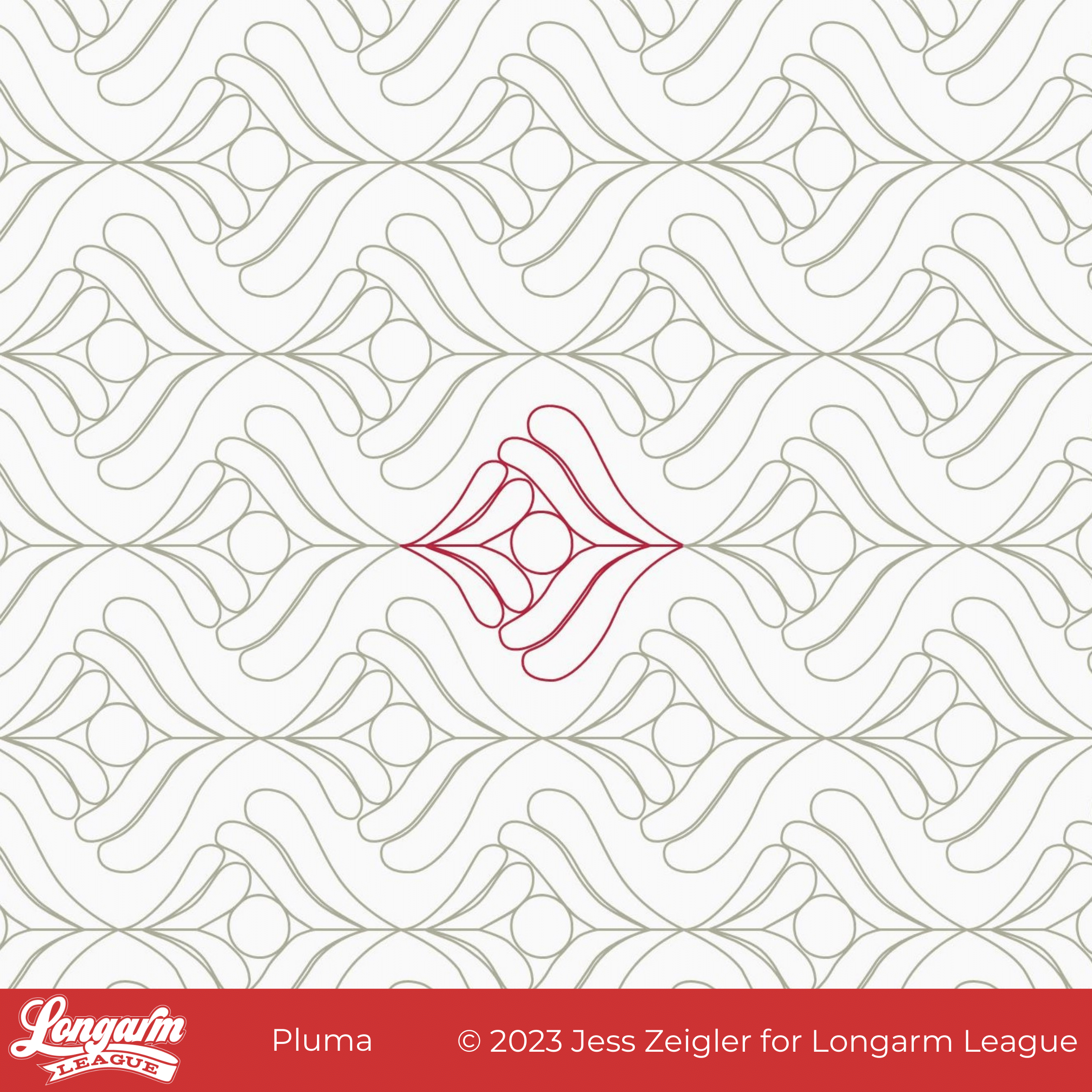
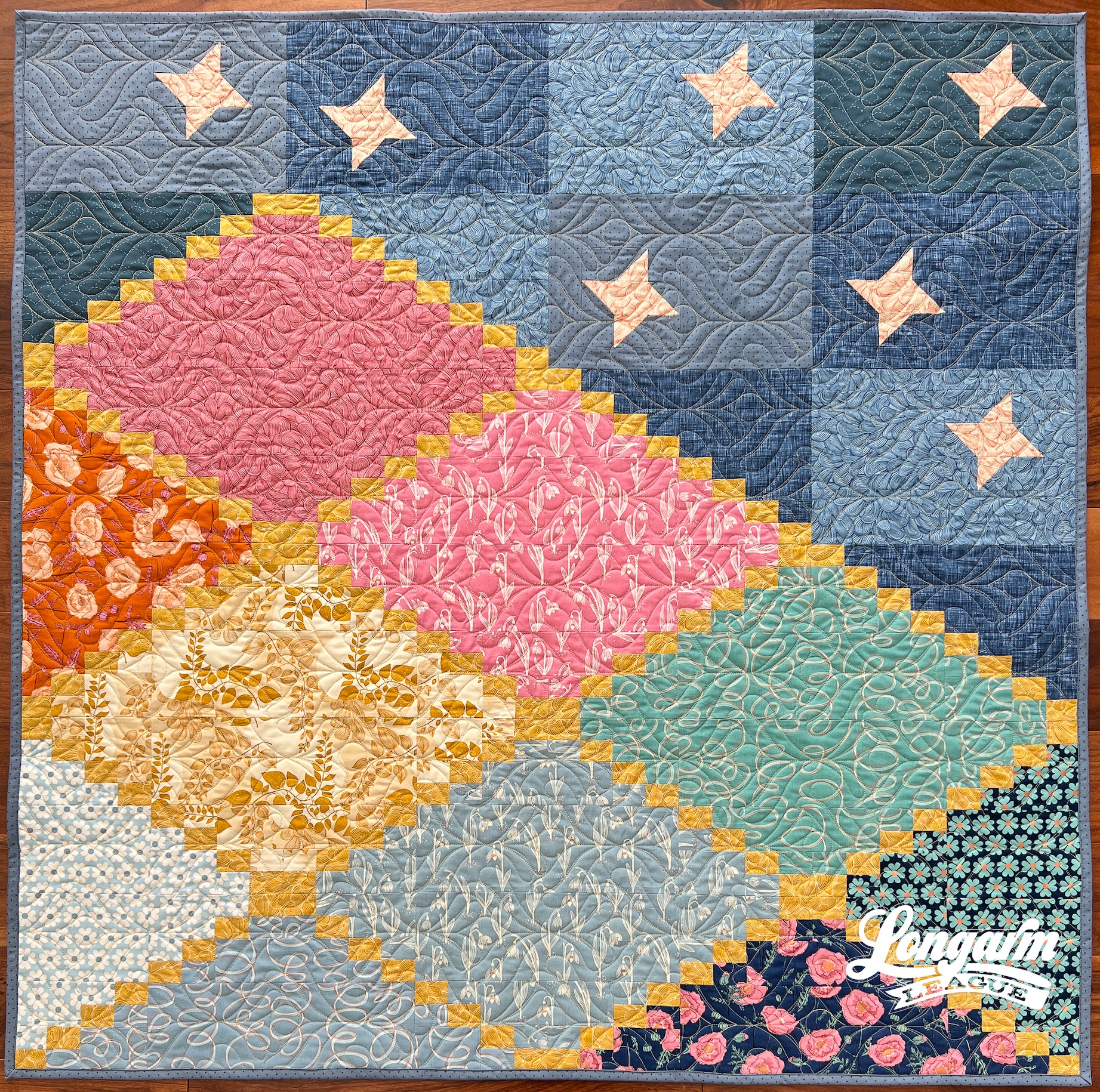
This is Pluma! Not only was it on display in our booth at QuiltCon last weekend, but it was the most popular quilt in our booth! More on the pattern later in this post.
Pluma is a unique digital panto in that it features feather plumes going against each other in each repeat. It's almost as if the larger couplet of plumes swallows the smaller couplet. It makes for interesting movement.
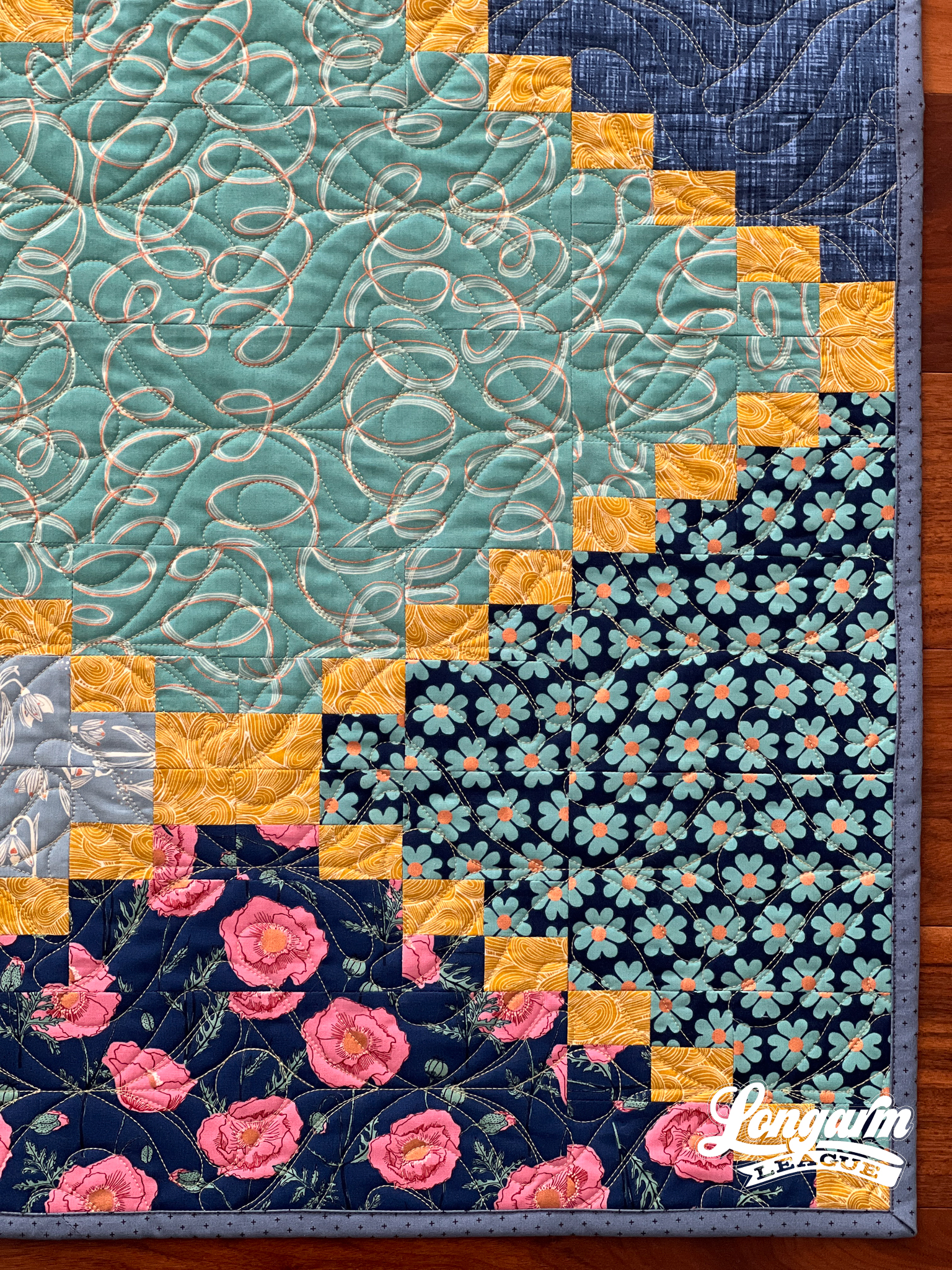
As a way of connecting the two halves of the design, there's a circle in the center of the motif. This provides another interesting textural element.
The plumes are stitched out individually with each plume nestled closely with its neighboring plume. While there is some minimal backtracking/overstitching in the design, it does not occur in the feathers.
The Quilt Design
I used the 2023 Stronger Together Quilt designed by Michelle Ramsay of Quilts Made with Love. She hosted the Quilt Along for this last month during Black History Month. This pattern can be downloaded with a donation to ...
Beleaf It or Not Digital Pantograph
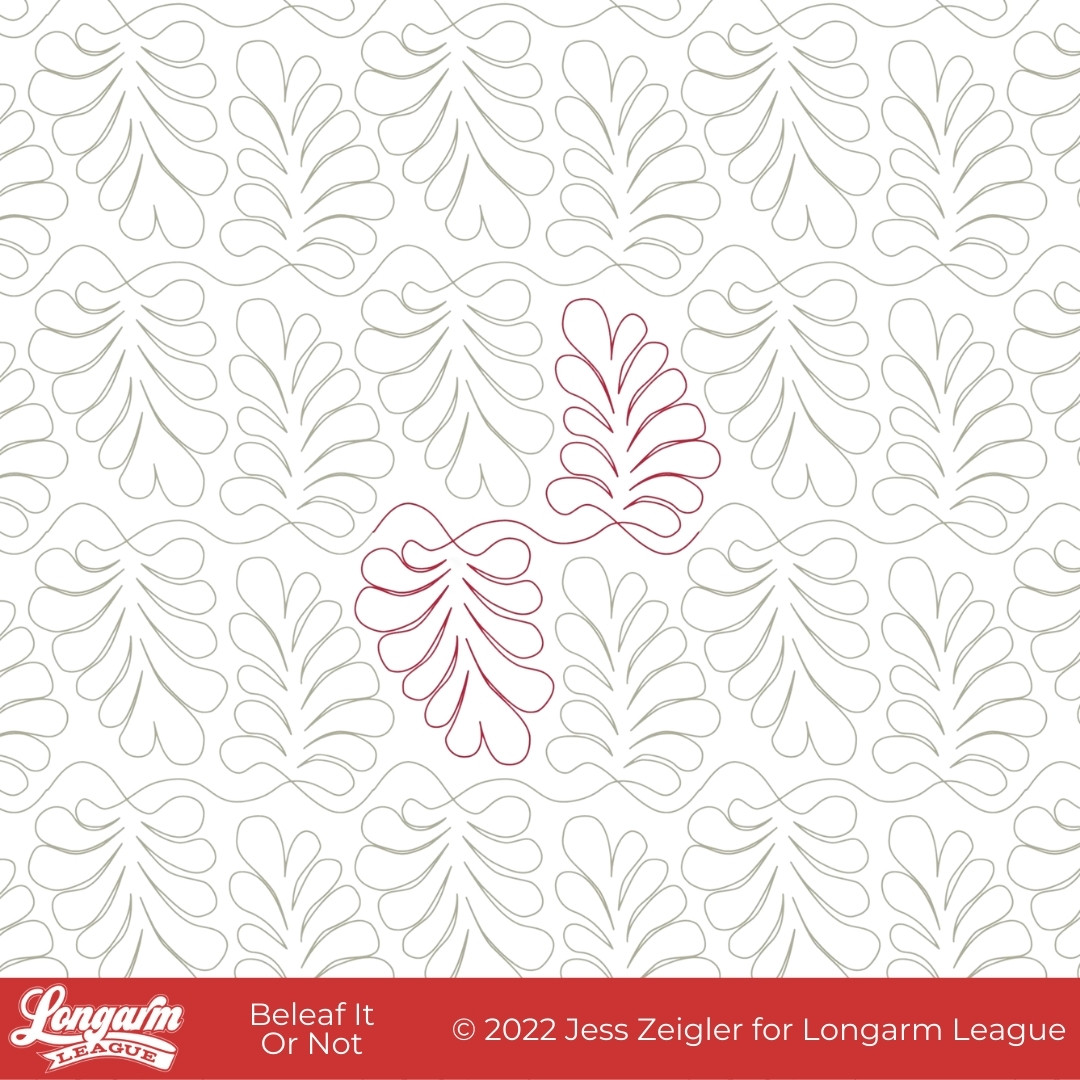
Quilty friends, naming designs is hard work. I was struggling to come up with a name for this design so I texted my mom and sister a photo of the finished sample, asking them for help. My sister's first response was Beleaf It Or Not and I laughed out loud so much that I had to go for it.

Seinfeld—because of the huge influence in our lives—has become part of our shared language. 'Beleaf It or Not' immediately reminded me of the episode that features George's outgoing answering machine message where he changed the words to the song "Believe It or Not".
THAT is what makes me giggle every time I think of it.

When I design edge to edge pantographs, my number one goal is to create interesting textures. I really love the repeated round shapes of the "leaves"—or as quilters would call them, feathers.

Here are my specifics using a baby-sized sample in the photos (45" x 45" quilt size):
Row height: 5.94"
Gap: -4.86"*
Pattern height: 10.8"
Offset: none
Backtracking: none
*Gap refe...
Feathered Spirals Digital Quilting Design

Instead of a soulless (😂) solid sample quilt, I'm so happy to share the special quilt I made for my new niece, Kate!

It had been such a long time since I'd done any sewing. I really love the entire quiltmaking process, so it was fun to get out the rotary cutter and domestic sewing machine again and work on something new.
And what better reason than a new baby in the family?

I "kept it simple" by deciding on a classic sawtooth star quilt. I picked fabrics from my stash and used the same fabric for my background throughout the quilt. I didn't need instructions because I've made this star so many times in the past. I did make myself a general "map" as I was cutting fabrics and making my stars. Feel free to use my decidedly unfancy pattern:
If you need a little more to go on than this, google sawtooth star, you'll likely find hundreds of patterns/tutorials.

Can we talk about the quilting already?! Ha - as a longarm quilter, it's my favorite part of the process.

I des...
Laverne and Shirley Digital Pantograph Designs
Meet Laverne...
and Shirley!

One's straight-laced, one's a little more adventurous. They are similar feather designs with different spines. If not sister designs, AT LEAST coworker/roommate designs. 😊
Even though it's a challenge to say Shirley and Laverne in that order, Shirley is where I want to start because that is the order of design conception.
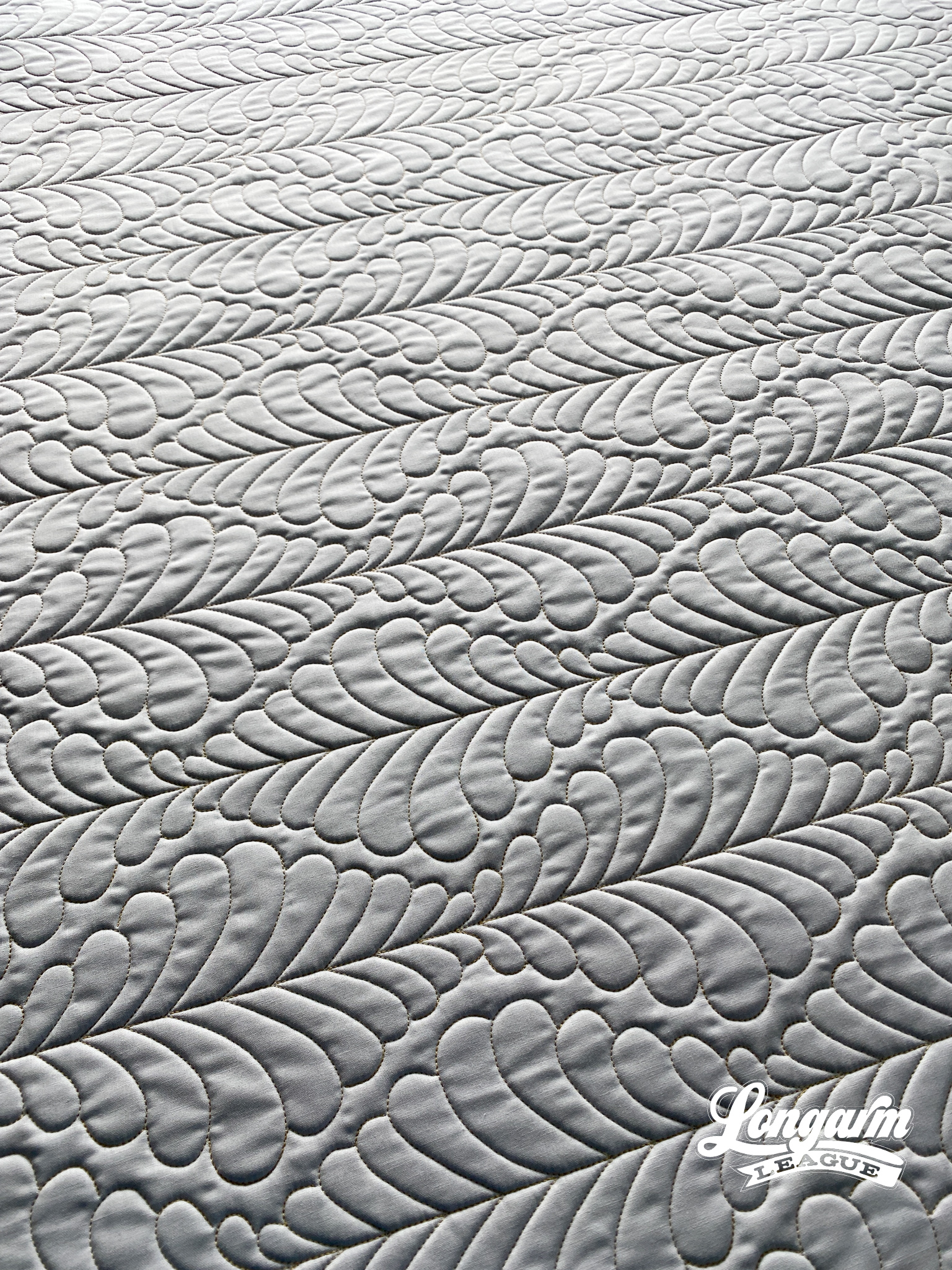
I liked the idea of the feathers nesting and interlocking within peaks and valleys of each row.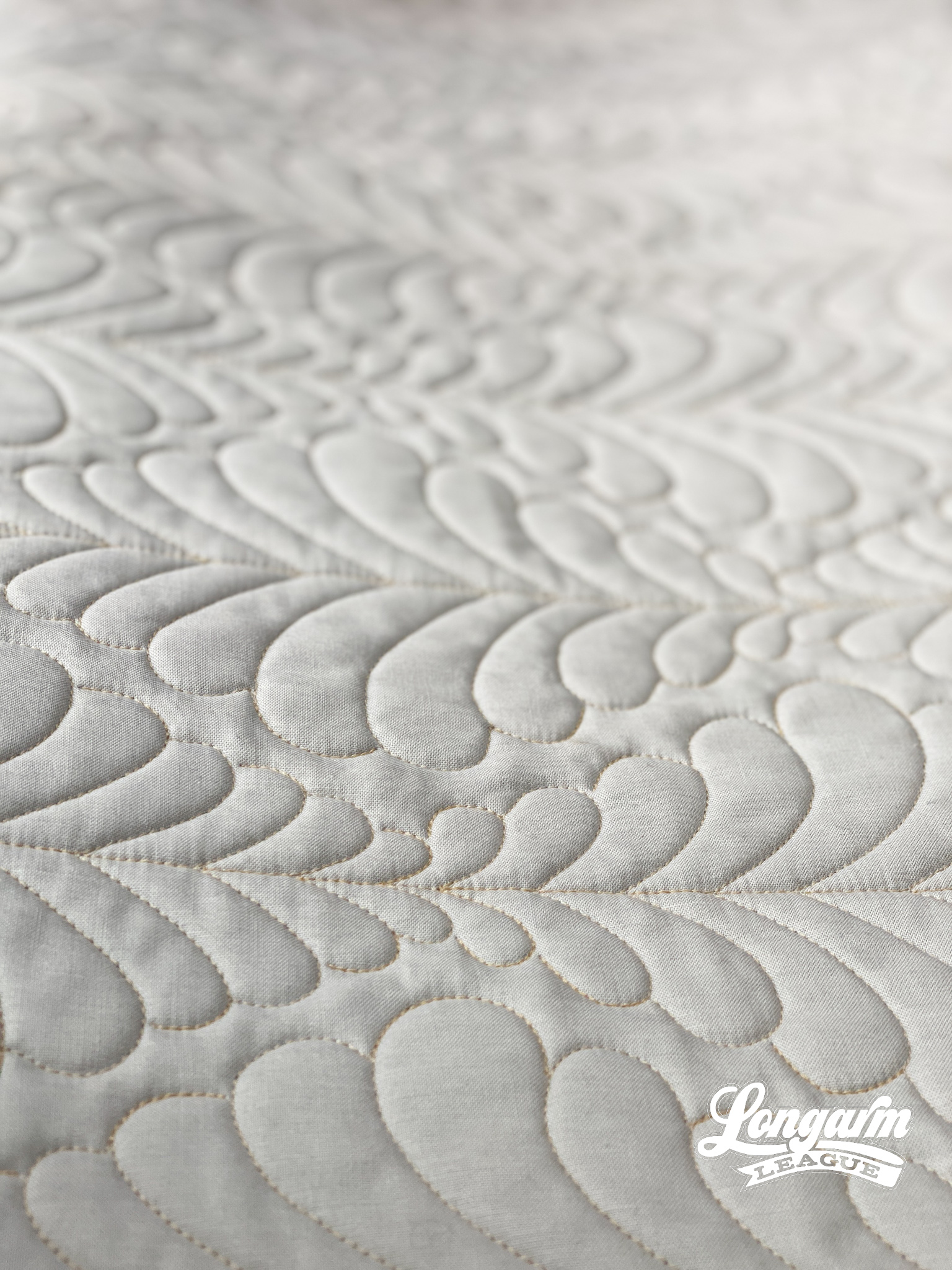
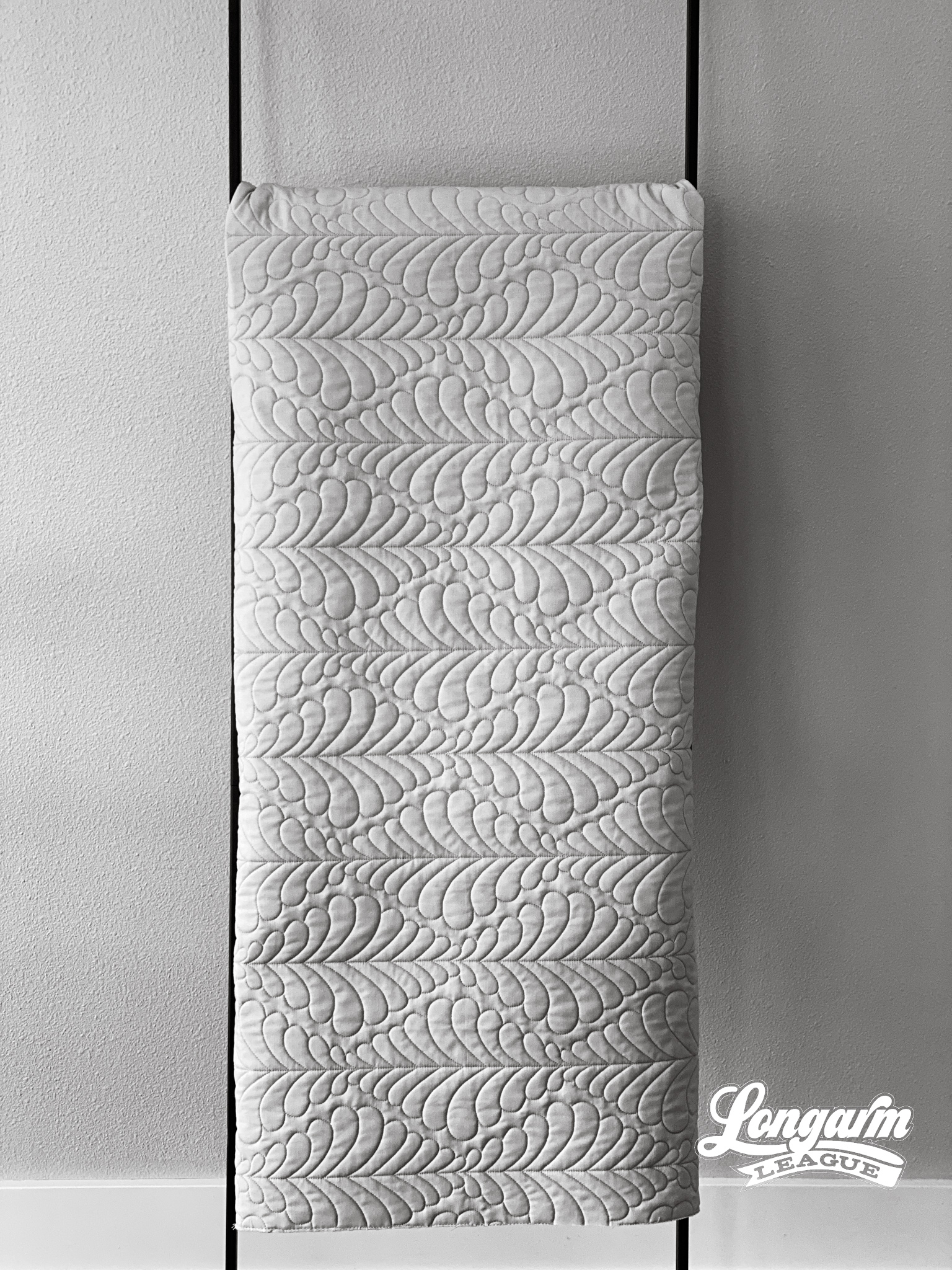
As with any design, I try to use backtracking or over-stitching as little as possible. When I would free-motion quilt, I made my feather bumps in the same fashion, but with the computer, I can "build my spine" incrementally as I progress from left to right.

Even though the designs look very similar, they are set up differently.
The Shirley design is made up of one feather motif that repeats and the Laverne design is made of a couplet that repeats: an upstream and downstream spine. See more pictures of the Laverne design to...
Featherweight Digital Quilting Design

I love feathers.
I took my first quilting class in 2005. Not a piecing class, an honest-to-goodness beginner's machine quilting class that taught things like which materials to use, how to baste, and how to {start to} free-motion quilt.

In that class, we saw examples of real-life quilts that had been quilted. Our instructor passed around even more books of incredibly inspiring quilting. I fell for hard for feathers right then and there!
This was also the class where I heard ladies talking about long arms and I just nodded along, not having any idea about what that could be referring to. 😂


Basically, I've loved feathers ever since, in all kinds of iterations. I practiced drawing and quilting them until I got it down pat. I started out being truly the worst at it! It's not a natural thing—knowing how to create feathery shapes. Thank goodness for books and (much later) YouTube! 

As for this design, I wanted to make minimalistic-looking, plump feathers that are easy to ...
Fancy Feathers Digital Quilting Pantograph
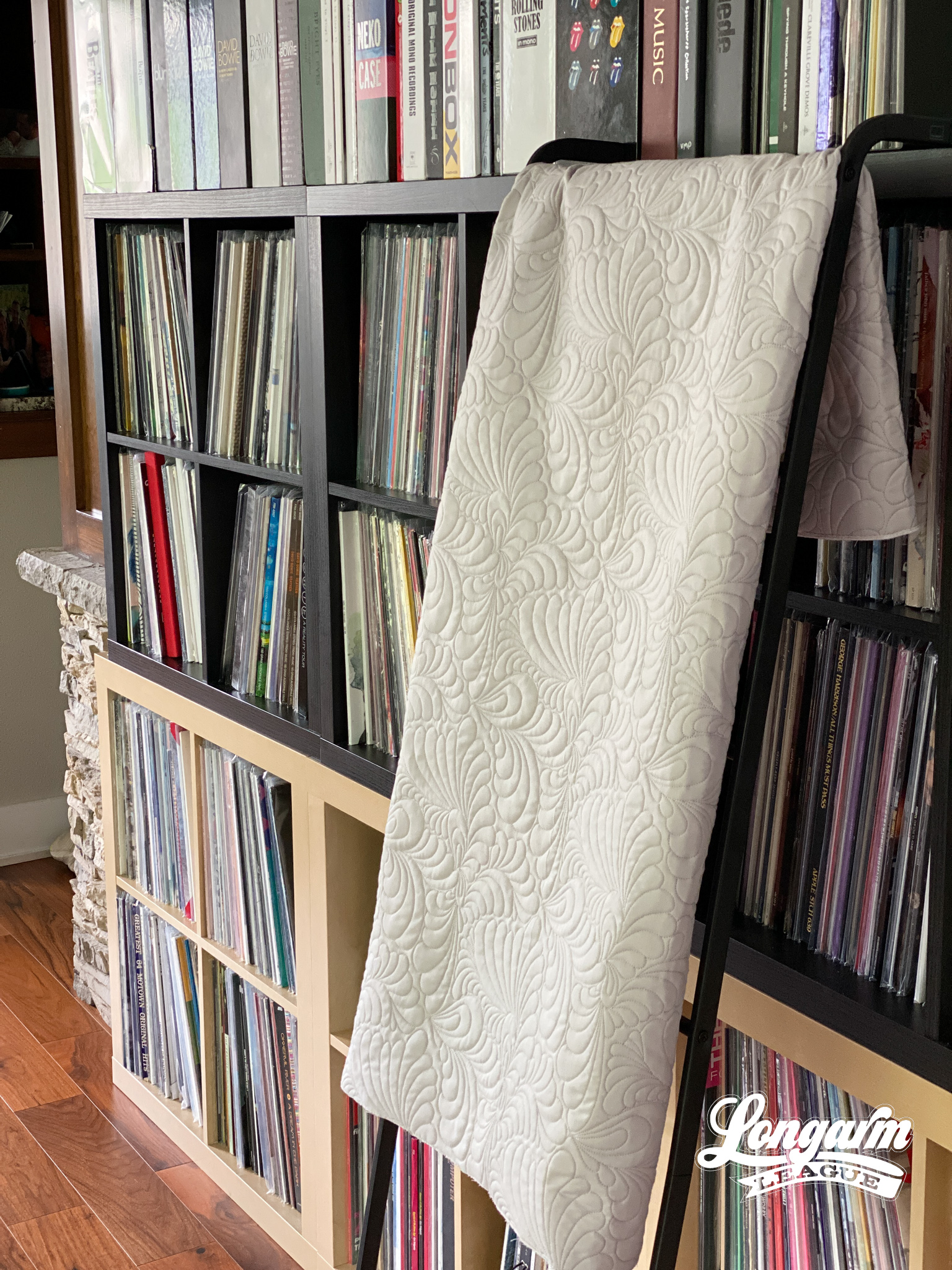
This design called Fancy Feathers is a digital pantograph design that was released to Longarm League members in February 2020. Our designs are not exclusive to members, though. Anyone can buy our pantographs from our shop.

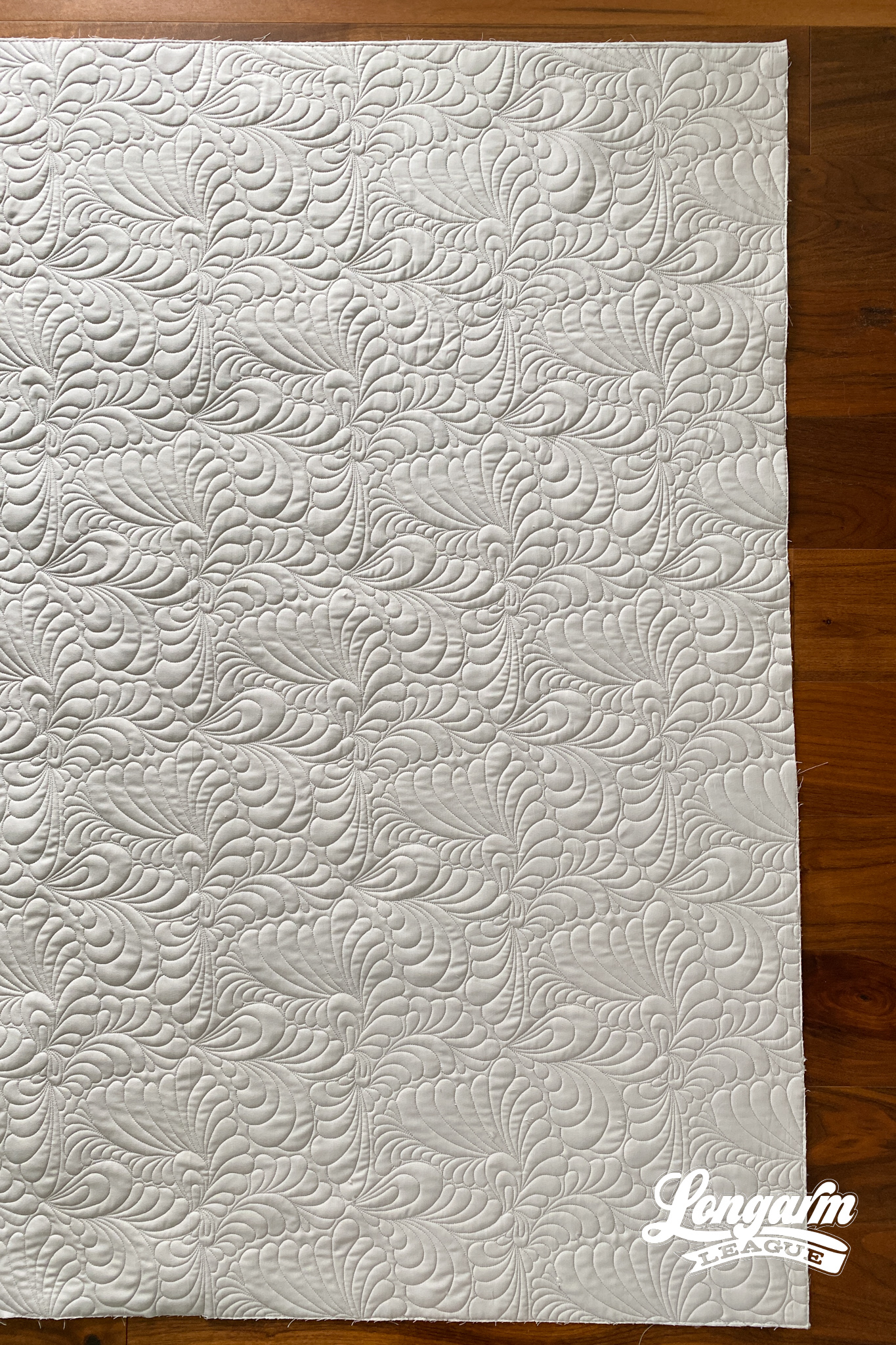
My story as a longarm quilter began by operating a non-computerized APQS machine. I was able to apply the quilting motifs I had practiced so hard to master on my domestic sewing machine by "translating" them to free-motion quilting on a longarm. This feather design came about from yet again "translating" the fmq design to a digital, repeatable pantograph.
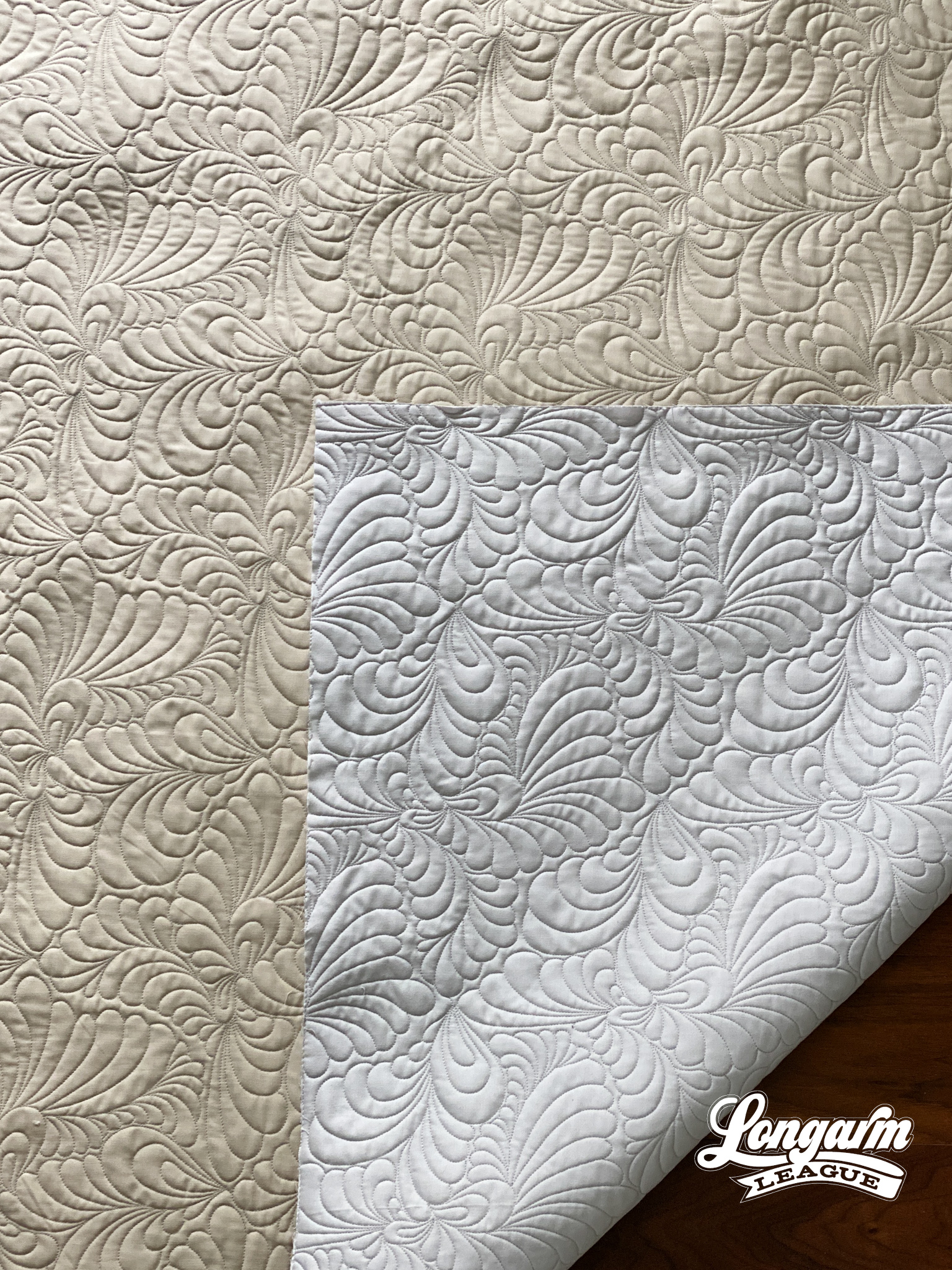
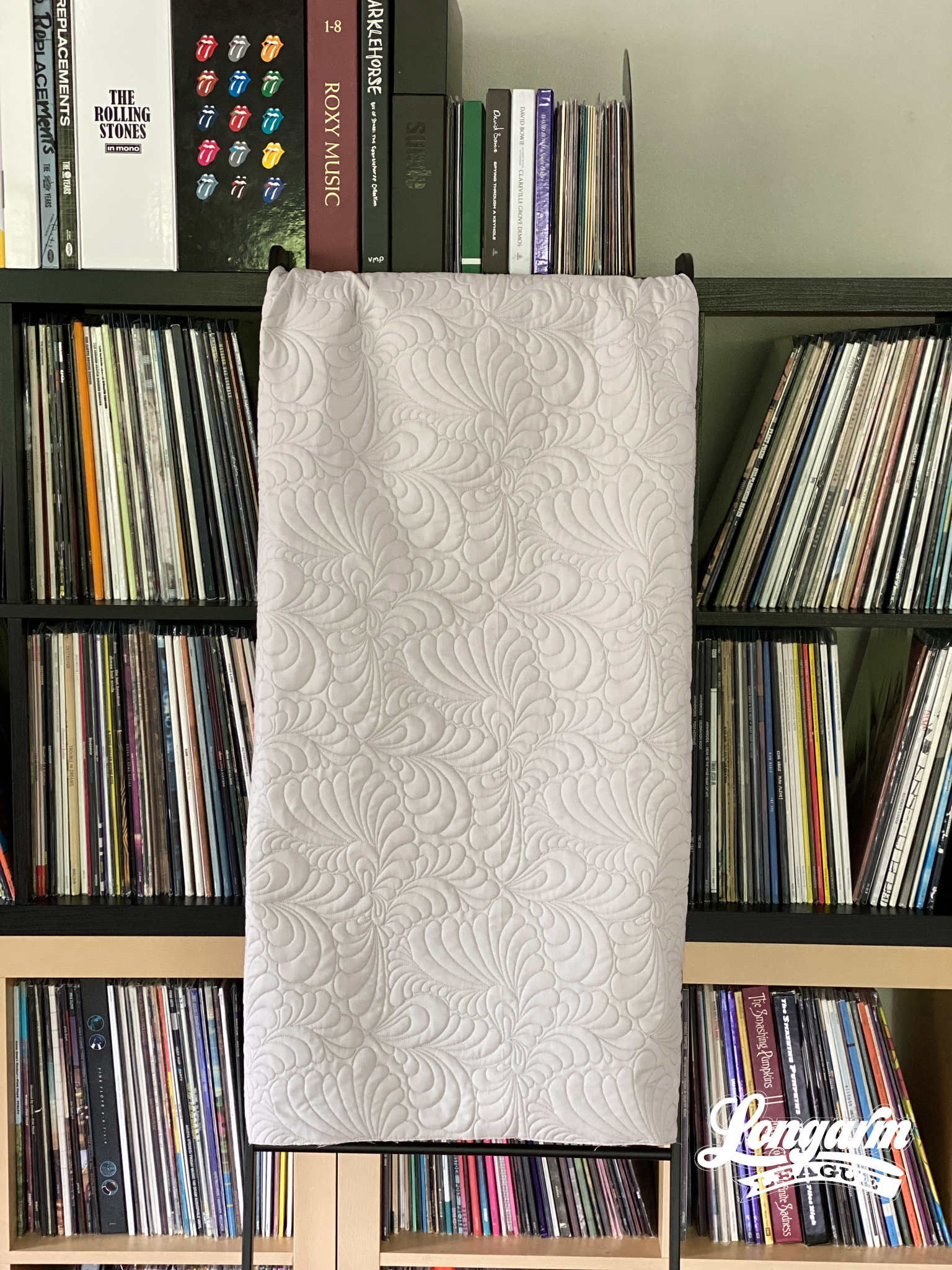
I really wanted to make the rows as invisible as possible, and so I created diamond-like repeats. This means that when setting up the design digitally, every other row needs to be offset at 50% and then nested closely so the gaps aren't too obvious.
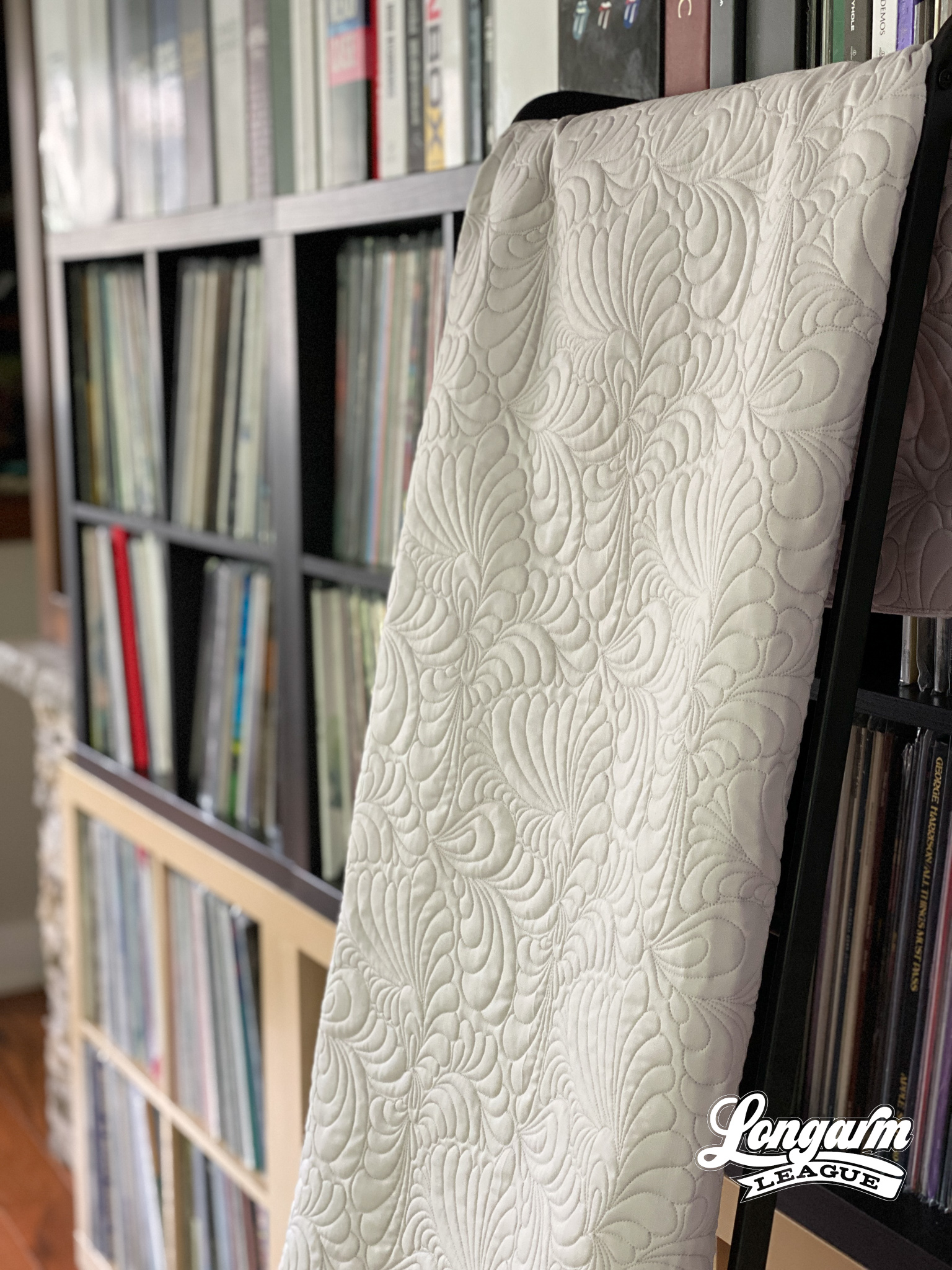

I think the multidirectional feathers help disguise the repeats and the rows. The dynamic feathers—some are big and long, some are small and...









